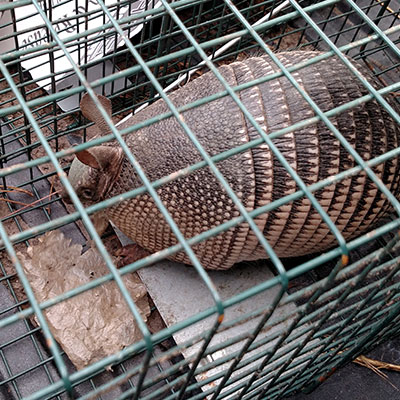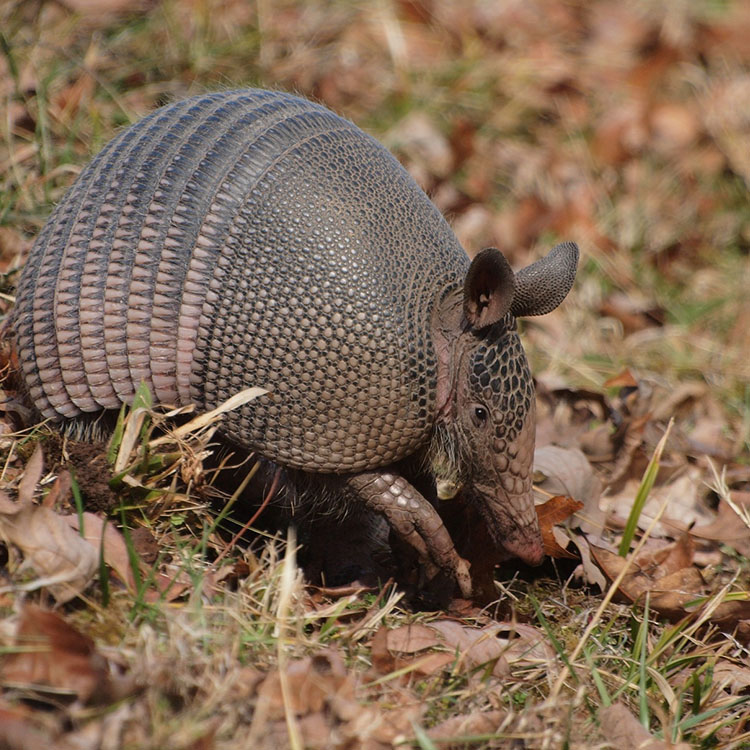How to Trap Armadillos: Tools, Bait, Cages
Once you’ve decided to go forward with trapping, it is important to make sure you equip yourself with the proper tools and information. You need to get large traps to catch an armadillo, otherwise you can run into the risk of it being too small. You’ll want to try to place the trap near their burrow for when they come out, you can camouflage the trap by hiding it in a bush or under debris. Remember that armadillos are nocturnal animals, so your chances of catching one increase during the early morning hours or overnight. You must check your traps regularly, not only will this prevent a trapped armadillo passing away in your yard, but armadillos are very strong and can bust out of the cages that they are trapped in so you want to remove them as soon as possible to prevent this.

Unlike most wildlife animals, you don’t have to use a bait to trap an armadillo. Most of their foods are insects found underground so they aren’t normally tempted by food baits. You can most often trap an armadillo with no bait in the trap at all. So, you may be wondering how you can coax an armadillo into your trap without bait. This is best achieved by creating a funnel with wire material. You can start the funnel at the burrow entrance leading into the trap. They will follow along the makeshift fence and walk into the trap.

Trapping armadillos is not an easy task, so you should not expect to catch your guest within the first day – or even the first week. It takes time and patience, as armadillos are naturally timid creatures and may be weary of the cage. Try not to move it around too much though, as this will significantly decrease your chances of catching anything. You may also end up catching other wildlife in the area, which can also get frustrating.
Once you’ve caught the armadillo, rehome it to an area where it will prosper. As an added measure, you may want to fill in the burrow so that other animals don’t come to investigate or to potentially use that burrow as their own.